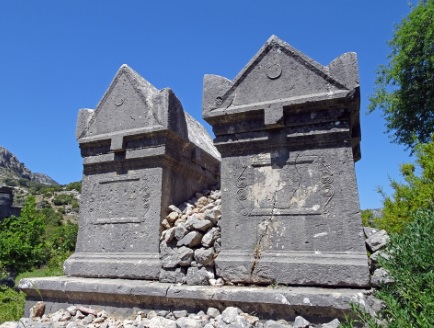Sidyma & Letoon
Continuing our journey Walking The Lycian Way we look at two historic sites. Sidyma and Letoon are both on The Lycian Way route. They are impressive ancient sites though neither get many visitors.

Sidyma is located on the slopes of Mount Cragus on the edge of the Xanthos Valley. In history, Sidyma was mentioned in the 1st century BC by the Greek scholar, Polyhistor. The current ruins were discovered by Charles Fellows in the mid-19th Century. Many fine ruins remain today including engraved Lycian Tombs, theatre, agora, baths and temples.

Today the local village is known as Dudurga. The villages have incorporated many of the ancient stone blocks into their village houses. The small, pretty Mosque in the centre of the village contains broken Roman columns.
www.roughguides.com/destinations/europe/turkey/turquoise-coast/xanthos-valley/sidyma/
https://en.wikipedia.org/wiki/Sidyma
Walking The Lycian Way, Letoon is 4 kilometres south of Xanthos near a paved road, close to modern day town of Kumluova. In history it was an important religious site in the region. Dating back to the 6th Century BC the site centred around a water spring from the ground.

In 1962 excavations discovered the foundations of the Hellenistic temple dedicated to Leto. Hence the name Letoon. At the site of modern day Letoon the ruins consist of temples and large amphitheatre. Perhaps the most intriguing discovery was later called ‘The Letoon Trilingual’ A carved stone bearing inscriptions in Greek, Lycian and Aramaic language. This provided archeologists with crucial information in being able to decipher The Lycian language. It can be seen today in the Fethiye Museum. Letoon was abandoned as a religous site and sanctuary around the 7th century AD.

Further information
https://whc.unesco.org/en/list/484
https://en.wikipedia.org/wiki/Letoon
Would you like more information about Walking The Lycian Way? If so, you can get in touch with us here http://localhost/lycian4/contact-us/
We look forward to hearing from you.
